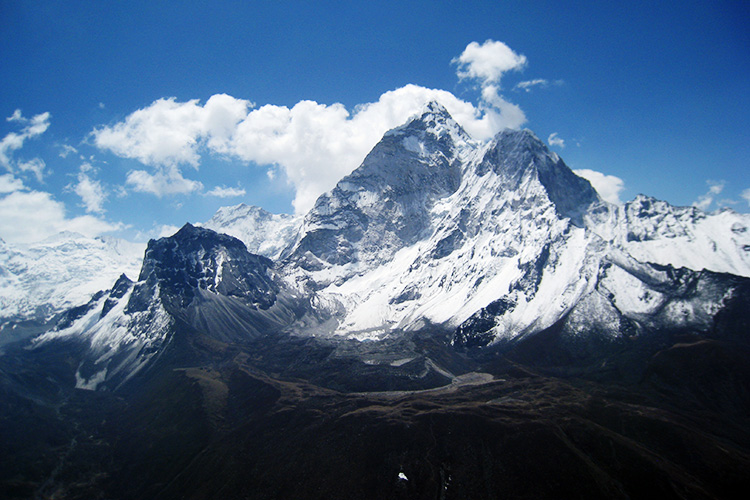What to expect on a trek to Everest Base Camp
The Himalayas, along with their renowned peak, Everest, have captivated people from all corners of the globe for a considerable amount of time. Although only a small fraction of the world's population will ever reach the summit of the Earth's highest point, you can still embark on an adventurous journey similar to that of Edmund Hillary and Tenzing Norgay by trekking to Everest Base Camp. This journey offers breathtaking landscapes as a guarantee. What other expectations can you have that are realistic?
“Mountains are the beginning and the end of all natural scenery.”
By John Ruskin
Accommodation
The trek to Everest Base Camp is widely recognized as one of the most sought-after and frequently traveled routes for trekking enthusiasts. Therefore, you won't need to worry about finding accommodation while on the trail. Along the main route, there are lodges available at intervals of at least one hour. In the lower sections, there is a diverse range of lodges available, with prices ranging from as low as USD 20 to upwards of USD 200 per night. During the peak seasons of March-April and October-November, it may be challenging to secure accommodations, particularly if you are trekking independently or with a small group. If necessary, you may have to use the dining hall as a bedroom.
Food and Water in Everest
You may be surprised to discover that the menus at Everest include dishes such as Enchiladas and Spaghetti Bolognese. Although the food may not meet the standards of Mexican and Italian cuisine, the menu at Everest indicates that there will be no shortage of food options available. It is advisable to cut down on meat and ensure that you do not miss out on consuming fruits. Due to the ban on killing animals in the Khumbu region, all the meat sold in the area is transported from villages located below Lukla. Therefore, it can be inferred that the meat would have traveled for a minimum of four days before reaching Pangboche. Porters do not carry meat in refrigerators. One of the most popular food items during a trek is the eat-all-you-can Dal Bhat, which happens to be the national dish of Nepal, despite the variety of other options available. Dal Bhaat is a well-balanced diet for a mountain lifestyle, consisting of rice for carbohydrates, lentils for proteins, curry for minerals, and pickles for taste. For information on safe drinking water while trekking in Nepal, please refer to the Water Safety section in the Health and Safety guide.
Electricity
You won't have any trouble charging your camera and phones while traveling along this route. There will be a fee associated with the altitude, and the fee will increase as the altitude increases. This is because hydro-electricity provides electricity at lower elevations, while solar power is used at higher elevations. It is important to remember to bring socket adapters for Type C (circular pins) and spare batteries for your cameras. Solar chargers and power banks are very helpful.
Internet in Everest
The availability of internet connectivity on Mount Everest is limited and unreliable due to the extreme altitude and harsh weather conditions. There are many ways to stay connected during the trek. It is important to note that none of these options will function in the same manner as what you are accustomed to at home. It should be noted that Wi-Fi is readily available in almost every lodge, including those in Gorak Shep. The cost ranges from Rs. 100 per hour at the lower end to Rs. 500 per hour at the higher end. NCell, a Nepali telecom company, provides 3G service in the vicinity of Everest Base Camp. Everest Link, a nearby Internet Service Provider, provides WiFi hotspots at almost every location along the trail, including Kala Patthar. For further information, please visit ttp://everestlink.com.np/. As per the information provided on their website, one can purchase usernames and passwords from various lodges and shops located along the trek.
It will be very physical
During the trek, you will need to walk a significant distance. On any given day, you can expect to spend between 4 to 9 hours traversing a variety of terrains, which may include steep hills, high suspension bridges, and rocky paths. Do not be deceived by the informal phrase "Nepali Flat." Although these sections of the trail are less steep than others, they still have some ups and downs. Your efforts are rewarded at every turn when you behold the breathtaking scenery of Nepal.
Altitude sickness
Altitude sickness affects approximately 50% of individuals, therefore it is possible that you may experience some form of it while trekking. At altitudes of 3000m above sea level and higher, it is common to experience symptoms such as headaches and nausea.
Diamox (acetazolamide) is a medication that some individuals take to alleviate altitude sickness. However, it is important to consult with your doctor before traveling to receive appropriate advice. Paracetamol and ibuprofen are effective in relieving symptoms. Taking Diamox may result in increased urination as a side effect. Therefore, it is advisable to be prepared for this during the trek and plan accordingly, such as finding appropriate locations to relieve oneself.






